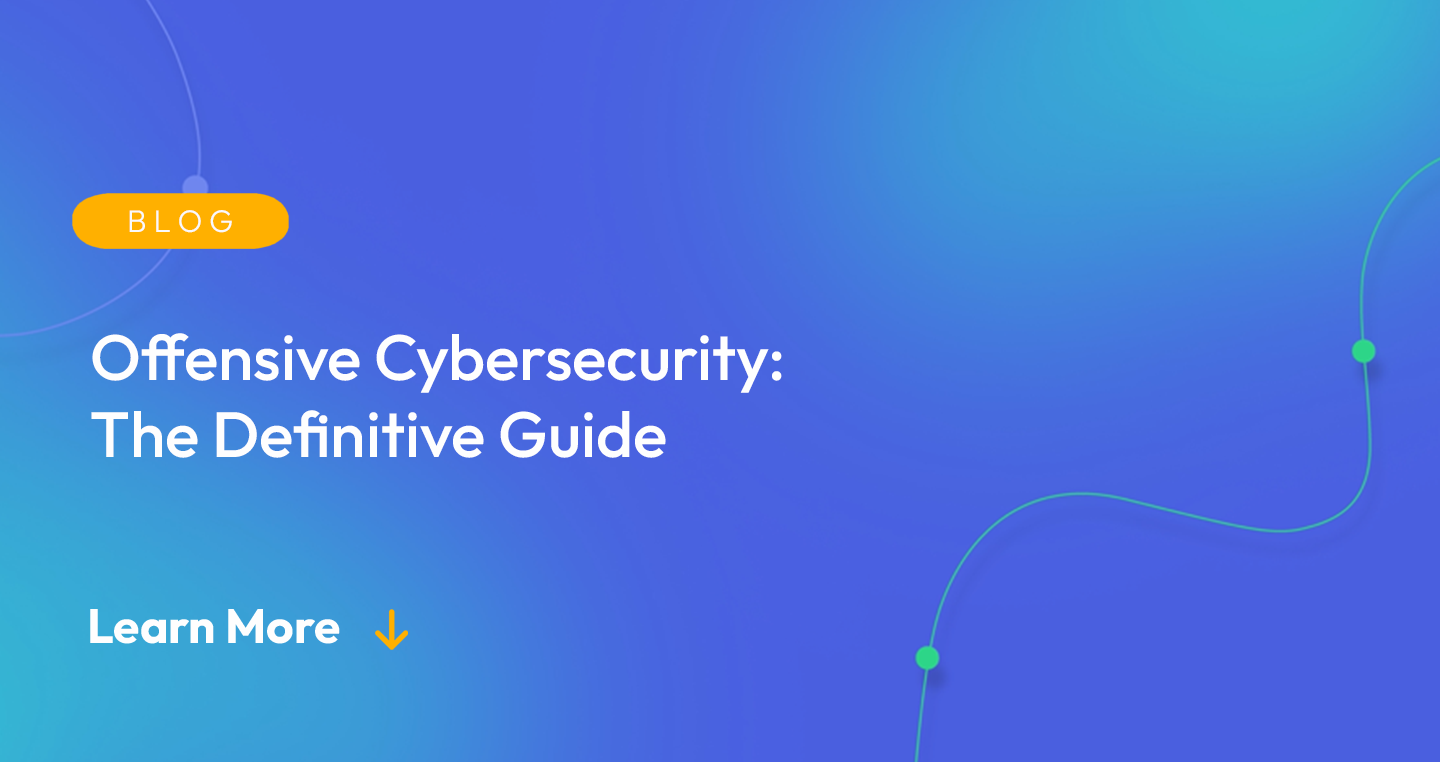
When considering how to thwart threat actors and protect IT assets against cyber attacks, many organizations take an inherently defensive approach. Locking down systems and assets with protective tools and procedures like firewalls, employee training, and incident response plans makes sense. However, in today’s high-volume and sophisticated threat landscape, intruders continue to innovate and find ways past defenses.
A modern cybersecurity strategy must include efforts to think like an adversary and mitigate any weaknesses before they get exploited. This article provides a definitive guide on the discipline formally referred to as offensive cybersecurity. Keep reading to learn what offensive security is and the key methods for executing an offensive cybersecurity program.
What is Offensive Security?
Offensive security is a strategy that aims to emulate the tools, tactics, and techniques used by real threat actors in an effort to improve an organization’s cybersecurity. By testing defenses, simulating real-world attacks, and looking for other gaps, the intelligence gleaned from offensive security helps companies outmaneuver malicious actors.
Offensive security is not a new concept. The nascent days of computing in 1972 saw James P. Anderson pioneer the idea of penetration testing as a practical way to evaluate data security safeguards. While sometimes used synonymously, penetration testing and offensive security are not the same—there are multiple methods to consider in any offensive strategy and pen testing is just one of them.
Relying on defensive tactics tended to work well when there was a clearly defined boundary between companies’ internal networks and the Internet. But digital transformation initiatives like cloud computing changed the game by dissolving this boundary and transferring many important IT assets to the internet. Furthermore, the popularity of for-profit cyber crime and the low barriers to entry make it even tougher for defensive strategies to keep malicious actors at bay.
Offensive vs Defensive Security: An Either or Choice?
Framing offensive and defensive cybersecurity as an either-or choice is not a helpful way of approaching security. Any effective and robust strategy should balance both offensive and defensive methods.
If you completely avoid defensive elements such as firewalls, access control, encryption, endpoint protection, SIEM systems, incident response, etc, you’re essentially inviting threat actors in with zero defensive shields to protect your important systems and data. Similarly, negating offensive security means you’ll only find out if there are ways to circumvent your defenses in the event that a genuinely nefarious actor manages to get inside your network, which is not exactly a proactive way of dealing with threats.
Key Methods for Offensive Security
Now that you’ve established the preemptive value of offensive security, what are your options?
Vulnerability Assessments
A vulnerability assessment is a basic yet useful type of offensive security engagement. Typically, you’ll run automated vulnerability scans against applications, infrastructure, or devices in order to find exploitable flaws in them. You can then rank these vulnerabilities in order of severity and devise a plan to mitigate the most severe ones. The best type of mitigation is to apply a security patch, but if that’s not possible, you’ll need to use a workaround that hardens the vulnerable system against a potential exploit.
Penetration Testing
Penetration testing is a type of offensive security engagement in which one or more ethical hackers simulates a cyber attack against a system to evaluate its security and unearth as many weak points as possible. The system in question could be a web application or your internal network. Assignments vary in type depending on the level of info provided to the ethical hacker:
- A black box test provides no information at all about the target system
- A white box test shares comprehensive details with the tester about the target system, users, and network topology
- A gray box test shares limited information with the pen tester
The human element ensures that penetration testing goes beyond mere vulnerability testing because it’s ultimately skilled hackers with technical knowledge who find the unexpected gaps and weaknesses in even the strongest defenses. Ethical hackers require years of experience, training, and certifications to land roles as pen testers.
Red Teaming
An important part of defensive cybersecurity is putting in place workflows and teams that respond to cyber attacks and try to minimize the damage inflicted by those attacks. But waiting for a genuine attack to learn about the effectiveness of your incident detection and response is risky.
Red team exercises assign a specific objective to a team of ethical hackers, such as seizing control of a privileged account or accessing a sensitive database. The ethical hackers, known as the red team, then strategize and carry out authorized attacks to achieve their objectives. The organizational team being tested in how they respond to this simulated attack is often referred to as the blue team, and a lot can be learned from the depth of these exercises.
Social Engineering Simulations
While hacking calls for critical thinking and a deep understanding of computers, the rudimentary initial method of access often has nothing to do with computer knowledge. Social engineering tactics like spear phishing, baiting, and smishing are involved in 98 percent of cyber scams today.
In recognizing the psychological susceptibility of users to social engineering, companies are turning to dedicated social engineering simulations as a form of offensive security. These simulations provide a proactive snapshot of how vulnerable your users are to social engineering attacks; something you’ll often only find out when it’s too late and a user has already downloaded a malicious file or revealed their login credentials to an app. You can use the lessons learned and attempt to reinforce social engineering training to harden users against these tactics.
External Exposure Monitoring
One of the defining characteristics of the modern threat landscape is how threat actors continually manage to stay ahead of organizations by using information available externally on the dark web and even on the clear web. This digital footprint of external exposures includes user credentials for sale on illicit marketplaces and leaked secrets on sites like GitHub or Pastebin.
By monitoring your company’s digital footprint in an automated way, you can find out about unknown external exposures and take measures to address them before it’s too late. This is an offensive tactic because it emulates how threat actors examine the dark and clear web for information that would make it easier to hack potential targets.
Go on the Offense with Flare
Security strategies focused solely on defense are insufficient to deal with modern threats, leaving all organizations in need of cybersecurity measures that incorporate both offensive and defensive strategies.
Flare helps your company go on the offense with simple and fast dark and clear web monitoring that detects risky external exposures in seconds. With an intuitive SaaS platform, you can proactively detect & remediate high-risk external exposure before opportunistic cybercriminals use this information to their advantage.
Get a demo of Flare’s offensive security capabilities today.





